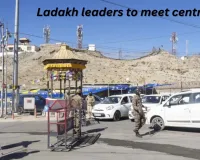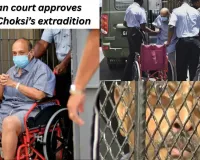Delhi Employs Cloud Seeding in Battle Against Toxic Smog, Experts Question Long-Term Value
Digital Desk
In a dramatic attempt to combat its annual environmental crisis, the Delhi government today conducted its first cloud-seeding trial over the smog-choked capital, aiming to artificially induce rainfall and wash away toxic pollutants from the air . The move comes as the city's air quality remained firmly in the "very poor" category, with an Air Quality Index (AQI) of 305, leaving millions of residents gasping for clean air .
The Artificial Rain Experiment
The much-anticipated trial was conducted on Tuesday, October 28, 2025, with an aircraft taking off from Kanpur to disperse chemicals over selected areas of the national capital, including Burari and Karol Bagh . Delhi Environment Minister Manjinder Singh Sirsa, who announced the operation in collaboration with IIT Kanpur, stated that eight fire flares were released during the half-hour trial, with rains expected "within 15 minutes to 4 hours" .
The technique involves spraying clouds with a formulation containing silver iodide and sodium chloride, substances designed to encourage condensation and trigger precipitation . This trial marks the first of at least nine planned exercises over the coming days, part of a ₹3.21 crore initiative approved by the Delhi Cabinet to conduct five cloud-seeding trials .
The execution has proven technically challenging. A previous test run last week failed to induce rainfall due to low atmospheric moisture, which was less than 20% against the 50% typically required for successful cloud seeding . Minister Sirsa noted that operations depend heavily on weather conditions in Kanpur, where the aircraft is stationed, requiring adequate visibility for takeoff .
The Severity of Delhi's Pollution Crisis
The urgent measures come amid yet another public health emergency for Delhi's 30 million residents.
- Widespread Poor Air: On Tuesday, 27 of the city's 38 air quality monitoring stations reported "very poor" air quality, with readings exceeding 300 . Siri Fort recorded the highest AQI at 351, followed by Wazirpur at 342 .
- Global Standing: A report from Switzerland-based IQAir earlier this year confirmed that New Delhi retains its status as the world's most polluted capital city, with India housing six of the ten most polluted cities globally .
- Health Impacts: The pervasive pollution is reducing the life expectancy of Delhi's citizens by an average of 11.9 years compared to World Health Organization guidelines, according to the University of Chicago's Energy Policy Institute .
Scientific Skepticism and the "Quick Fix" Critique
Despite the government's efforts, atmospheric scientists remain deeply skeptical about cloud seeding as a meaningful solution to pollution.
Professor Krishna Achuta Rao, from the Centre for Atmospheric Sciences at the Indian Institute of Technology, New Delhi, offers a stark assessment: "Cloud seeding is not really a cure for pollution. It can dissipate pollution only for a few days after which the air quality returns to the state that it was before" .
He and other experts argue that the primary function of such measures is perceptual—to demonstrate action to a frustrated public. "The main purpose appears to be to show people that something is being done," Rao stated . This perspective highlights a growing tension between temporary technological interventions and the need for fundamental, systemic change.
The table below summarizes the primary contributors to the crisis:
| Pollution Source | Impact and Current Status |
| Stubble Burning | Farmers in Punjab, Haryana & UP burn crop residue. Despite some decline, hundreds of fires continue as it's the cheapest clearance method . |
| Vehicular Emissions | A constant, year-round source exacerbated by traffic congestion and fuel adulteration . |
| Industrial Emissions | Accounts for over 50% of pollution in urban areas; a major contributor to PM2.5 levels . |
Other Mitigation Efforts and Long-Term Vision
Facing public anger, authorities have deployed a suite of short-term measures alongside cloud seeding. These include construction bans, restrictions on diesel generators, and the deployment of water sprinklers and anti-smog guns to settle dust and particulate matter . Critics maintain these are after-the-fact mitigations rather than preventative solutions.
For a long-term vision, the Indian government has inaugurated the National Clean Air Program (NCAP), which aims to reduce pollution levels by 20-30% by 2024 in 122 of the worst-affected cities . Initiatives include the push for electric vehicles, cleaner BS6 engine standards, and machines that convert crop residue to fertilizer to eliminate the need for burning .
A Clear Verdict
The image of an aircraft seeding clouds over Delhi provides a powerful symbol of a government grappling with a profound crisis. However, the scientific consensus is clear: silver iodide scattered in the atmosphere cannot silver-line the city's toxic cloud. As Professor Rao concludes, the only permanent solution lies in "implementing strong laws that can result in reducing emissions from all sources, including industries, vehicular pollution and construction" .
For now, the people of Delhi continue to wait for the promised artificial rain, for a reprieve from the smog, and for their leaders to move beyond temporary hacks to genuine, lasting solutions.











